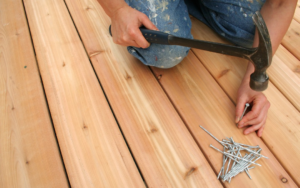Organizing an event requires a lot of time and energy. Choosing a catering service removes one portion of the stress and allows you to focus on other important aspects.
Catering In Chandler AZ is a great way to attract and retain customers. Staying updated on trends, food safety & hygiene, and decor guidelines is essential to your success.

Menu planning is creating a catering menu that meets customer demand, dietary needs, and regulatory requirements. It involves understanding the client’s budget, food preferences, event type, and number of attendees. It also involves setting prices for menu items based on industry standards and desired profit margins. A menu should be designed to reflect the tone of the event, such as a formal dinner for a corporate meeting or a family gathering for a birthday celebration.
An effective menu should include dishes that suit the occasion and are easy to prepare in the kitchen. It should also contain a variety of options to meet different tastes and dietary restrictions. For example, a vegetarian or gluten-free option can attract customers who may otherwise not be interested in the restaurant’s offerings. A menu should also offer a range of price points to cater to a wide audience and accommodate varying budgets.
The size of the venue also influences menu planning. For example, a small private party will require less food than a large wedding reception. An effective catering menu should also be prepared with seasonal ingredients to encourage customer interest and boost profitability.
Menus should also be reviewed regularly to account for ingredient prices and operational costs. In addition, incorporating menu items that can be used in multiple ways can reduce waste and increase profitability. For example, a standard chicken breast can be served as a main entree, added to soups and salads, or used as a topping for pizza. By doing this, chefs can reduce the amount of ingredients needed to prepare a dish while increasing efficiency and cutting down on food waste.
Menu planning should also consider the potential for future trends to influence customer demand. By doing so, restaurants can ensure that they are ready to implement new dishes when the demand arises. This will help protect them from the financial impact of a trend that may not be as popular as originally expected.
Preparation
Preparation is a key part of catering services. This includes food preparation, preparing serving dishes and equipment, setting up the event venue, and providing information about any potential allergens or other important details to guests. Proper preparation can help you avoid costly mistakes and improve your overall service. It’s also important to practice proper hygiene during the preparation process. For example, use separate cutting boards and utensils for raw and cooked food and make sure to wash them thoroughly with hot water and soap. You should also change your gloves after handling raw meat or fish.
Another aspect of catering involves ensuring that all food and drink items are served at the correct temperature. This may require reheating or warming some items before serving them to guests. It’s also important to make sure that all serving plates and utensils are clean before and after use. This will help prevent contamination and reduce the risk of cross-contamination between different types of foods.
Most caterers work onsite at private homes and events venues, but some also provide offsite catering services. This can include serving food at business meetings, conventions, weddings, and other special occasions. Offsite catering can take place at a restaurant’s own facilities or at a third-party location such as a hotel, banquet hall, or convention center.
A catering company’s most important assets are its food and beverage selection, preparation techniques, and presentation skills. These factors can make or break a company’s reputation and profitability. To improve their catering skills, many catering companies send their chefs to culinary school or other professional training programs. This ensures that they have the latest knowledge and techniques.
Another factor in the success of a catering company is its business structure. This determines how the company is taxed, and it also affects the level of personal liability for any debts or legal proceedings. A catering business that operates as a sole proprietorship has the least amount of paperwork and administrative burden, but it doesn’t offer the protections of a corporation or partnership. A catering company should carefully consider its options before deciding on its business structure.
Setup
Setting up a catering business takes planning. You’ll need to decide if you want to serve everyone or go deep into a niche market, such as vegan or gluten-free cuisine. You’ll also need to determine your capacity and choose a business structure. A sole proprietorship gives you the most freedom, but it can leave you personally liable for debts and legal proceedings. If you have a steady income, it might be best to set up an LLC instead.
Once you’ve decided how to set up your catering business, you need to figure out what equipment and services you’ll offer. You may want to start small and serve just cocktail parties, staff lunches or wedding showers for now. As your business grows, you can expand to more events.
Your setup will depend on the type of event. For a sit-down dinner, you might need to provide plated service, in which case guests are seated at tables and servers bring individual plated meals to them. For a buffet-style meal, you might need to use stations that let guests serve themselves from a range of dishes.
The catering setup you select will also depend on whether you’ll provide food delivery or full-service catering. Delivered catering is ideal for busy events, as it eliminates the need to prepare and serve meals on site. In contrast, full-service catering includes all aspects of the catering process from menu planning to cleanup. In the latter instance, you need to ensure that you have adequate space to accommodate the caterer and guest seating, as well as all the necessary catering equipment and wares. Setup also involves creating catering packages and templates that combine pre-existing menu items to create all-inclusive pricing options for conferences and groups. These are grouped into logical entities called item classes and then mapped to revenue types so that the catering resource can be reported on at the revenue group level if desired.
Service
Catering is a vital part of many events, whether it’s a wedding reception, corporate event, or birthday party. Without the right food and drinks, the occasion would not be as enjoyable. A catering company offers a wide range of services, including menu planning, food preparation, and delivery. They also offer a full service setup that includes food and beverage service at the venue of the event. These services are available for all types of events and venues.
A catering company’s customer service is an important aspect of the business. It’s essential to provide a great customer experience in order to attract new customers and retain existing ones. To do this, catering companies should be responsive to customer requests and provide multiple channels for communication. They should also be open to feedback and willing to make changes to improve their services.
In addition to providing excellent customer service, a catering company should focus on offering sustainable practices. This will help them reduce their carbon footprint and appeal to environmentally conscious customers. They should also invest in technology to streamline their processes and provide a better customer experience. For example, they should use a cloud-based catering software to manage their inventory, improve efficiency, and increase sales.
Another way to improve your catering company’s customer service is to use a blog to share industry insights and advice with potential customers. This will build brand awareness and allow you to showcase your expertise. You can write about topics ranging from event hosting etiquette to menu trends. Blogging can also help you drive more traffic to your website and social media pages, which can lead to more business.
A catering service can also assist in the planning of an event by helping to find a venue, hiring vendors, and securing rentals. They may even provide tables, chairs, linens, dishware, bar glasses, space heaters, and more. They can also custom craft an appetizer, drink, and dinner menu to fit the theme of the event and match your budget. They can even help with staffing and scheduling to ensure that everything runs smoothly at the event.








